- GradCAM
- GradCAM++
- ScoreCAM
- XGradCAM
- AblationCAM (with a fast batched implementation)
Tested with most of the torchvision models. You need to choose the target layer to compute CAM for. Some common choices can be:
- Resnet18 and 50: model.layer4[-1]
- VGG and densenet161: model.features[-1]
- mnasnet1_0: model.layers[-1]
pip install grad-cam
from pytorch_grad_cam import GradCAM, ScoreCAM, GradCAMPlusPlus, AblationCAM, XGradCAM
from pytorch_grad_cam.utils.image import show_cam_on_image
from torchvision.models import resnet50
model = resnet50(pretrained=True)
target_layer = model.layer4[-1]
input_tensor = # Create an input tensor image for your model..
#Can be GradCAM, ScoreCAM, GradCAMPlusPlus, AblationCAM, XGradCAM
cam = GradCAM(model=model, target_layer=target_layer, use_cuda=args.use_cuda)
grayscale_cam = cam(input_tensor=input_tensor, target_category=1)
visualization = show_cam_on_image(rgb_img, grayscale_cam)Usage: python cam.py --image-path <path_to_image> --method <method>
To use with CUDA:
python cam.py --image-path <path_to_image> --use-cuda
You can choose between:
GradCAMScoreCAMGradCAMPlusPlusAblationCAMXGradCAM
Some methods like ScoreCAM and AblationCAM require a large number of forward passes, and have a batched implementation.
You can control the batch size with
cam.batch_size =
It seems that GradCAM++ is almost the same as GradCAM, in most networks except VGG where the advantage is larger.
| Network | Image | GradCAM | GradCAM++ | Score-CAM |
|---|---|---|---|---|
| VGG16 |  |
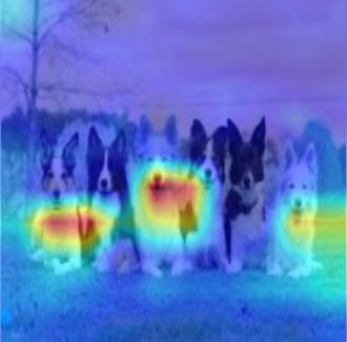 |
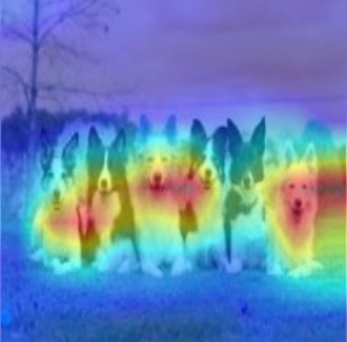 |
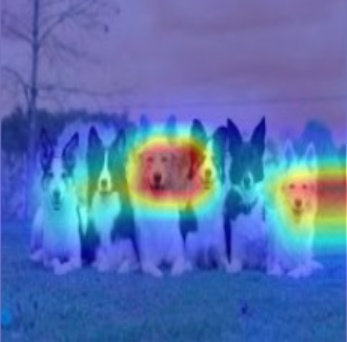 |
| Resnet50 |  |
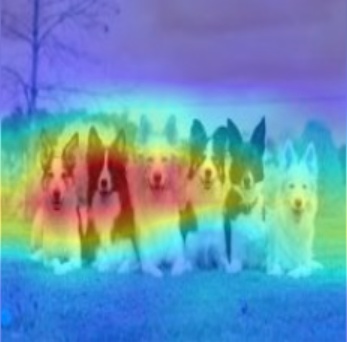 |
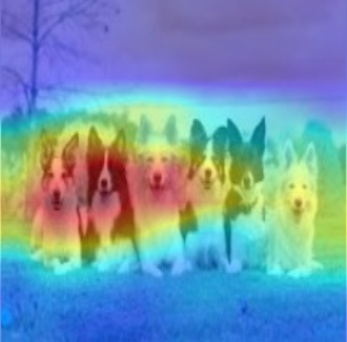 |
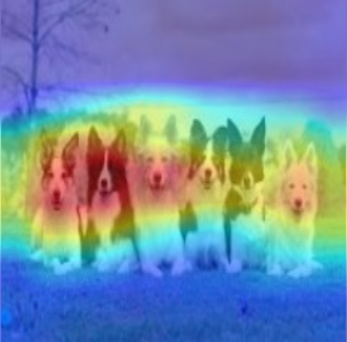 |
https://arxiv.org/abs/1610.02391
Grad-CAM: Visual Explanations from Deep Networks via Gradient-based Localization Ramprasaath R. Selvaraju, Michael Cogswell, Abhishek Das, Ramakrishna Vedantam, Devi Parikh, Dhruv Batra
https://arxiv.org/abs/1710.11063
Grad-CAM++: Improved Visual Explanations for Deep Convolutional Networks Aditya Chattopadhyay, Anirban Sarkar, Prantik Howlader, Vineeth N Balasubramanian
https://arxiv.org/abs/1910.01279
Score-CAM: Score-Weighted Visual Explanations for Convolutional Neural Networks Haofan Wang, Zifan Wang, Mengnan Du, Fan Yang, Zijian Zhang, Sirui Ding, Piotr Mardziel, Xia Hu
https://ieeexplore.ieee.org/abstract/document/9093360/
Saurabh Desai and Harish G Ramaswamy. Ablation-cam: Visual explanations for deep convolutional network via gradient-free localization. In WACV, pages 972–980, 2020
https://arxiv.org/abs/2008.02312
Axiom-based Grad-CAM: Towards Accurate Visualization and Explanation of CNNs Ruigang Fu, Qingyong Hu, Xiaohu Dong, Yulan Guo, Yinghui Gao, Biao Li


